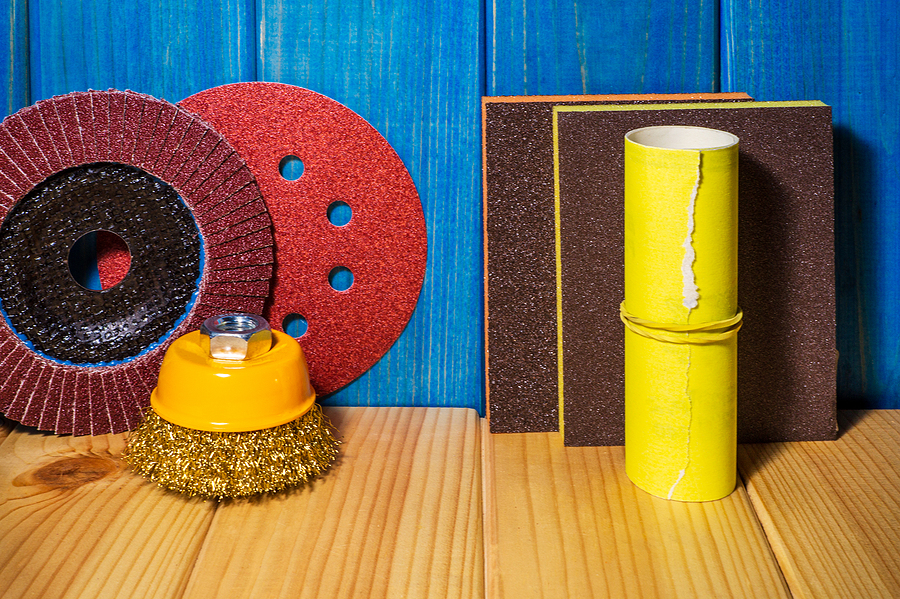Posted by Sandpaper America on Feb 13th 2024
Sandpaper Hacks: Tips and Tricks for Home Improvement
For any DIY enthusiast, home improvement hobbyist, or professional carpenter, the whisper of sandpaper over wood signals the transformation of a raw material into a smooth, polished article. Sanding is the unsung hero of woodworking, the final finesse of a freshly stained cabinet, or a repainted wall. In this comprehensive guide, we will uncover the secrets of sandpaper that go beyond the obvious and help you achieve that fine finish you've always aspired to in your projects.

The Nitty-Gritty on Sandpaper
The key to a successful sanding project is understanding the sandpaper you are using. Sandpaper comes in a variety of grits, each designated to a particular level of coarseness. For instance, lower grits are coarser and best for smoothing out rough areas or removing paint and varnish, while higher grits are finer and perfect for giving a fine finish or preparing surfaces for painting. The types of sandpaper are typically differentiated by the abrasive material used, including garnet sheets, aluminum oxide, and silicon carbide, each serving a specific purpose. It's essential to match the right sandpaper to your woodworking challenge for optimum results.
Choosing the Right Sandpaper
Selecting the correct sandpaper is a critical part of any upcoming project. The choice is influenced by several factors: the softness or hardness of the wood being sanded, the type of finish you want to achieve, the nature of the imperfections being removed, and the type of sanding equipment being utilized. Selecting the correct abrasive, backing material, and grit size can make your sanding process more efficient and effective. It's the small choices like these that can make a huge difference in the final look.
Tips for Effective Sanding
Proper sanding technique is an art form. Start with the coarser grits, working your way to the finer ones. Always sand in the direction of the grain to avoid cross-grain scratches. Apply even pressure and don't rush the process. Change the sandpaper regularly, as dull grit can actually create more work rather than less. Remember, the key to effective sanding is patience and persistence.
Common Sandpaper Hacks
Sandpaper isn't just for sanding. It's a versatile tool with various DIY applications:
Sharpening Tools – Sandpaper can be used to sharpen blades and other sharp objects. Simply fold a strip of sandpaper in half to sandwich the blade and sharpen using your regular sharpening technique.
Rust Removal – For a quick rust removal solution, sand an iron surface with drying machine sandpaper and follow up with a rubdown of white spirit.
DIY Anti-Slip Surfaces – Use medium-grit sandpaper to create an anti-slip surface on wooden steps or floors. This is a great safety addition to any home, especially in high-traffic or wet areas.
Leather Smoothing – Smooth out rough leather edges with a gentle sanding using fine-grit sandpaper.
Prep for Gluing – Rough up surfaces to enhance glue adhesion. Light sanding of both surfaces before gluing can create a stronger bond.
Scratch Repair – Use fine-grit sandpaper to lightly sand out scratches on hard surfaces. This is particularly effective for light scratches on glass.
Sandpaper Maintenance and Storage
The key to getting the most out of your sandpaper is proper maintenance and storage. Remember to keep your sandpaper dry and clean. If using a power sander, dust can be cleaned from the sandpaper relatively easily with a rubber cleaning stick or a crepe rubber block. Sandpaper can be reused if it's not excessively dull and if dust and other debris are periodically cleared from its abrasive surface.
To store sandpaper efficiently, consider using an organizer with dividers to keep it sorted according to grit. Store sandpaper in a cool, dry place and avoid folding or bending it, as that can damage the abrasive surface and impact its effectiveness.
Conclusion
Whether you are a professional woodworker or an avid DIYer, the value of sandpaper in your toolkit cannot be overstated. With the right knowledge and preparation, you can leverage this seemingly simple yet remarkably versatile tool to bring out the best in your home improvement projects. Remember, effective sanding is a steppingstone to a successful finish. With these sandpaper hacks, you'll not only elevate the quality of your projects but also improve the efficiency of your work. Start sanding smarter today and enjoy the satisfying results it brings to your craft.
Are you looking for high-quality sandpaper materials and supplies for your home improvement toolkit? Contact Sandpaper America at 1-800-860-7263 (SAND) to order from a wide variety of sandpaper products for woodworking and home improvement in Indiana. Call to place an over-the-phone order or go online and buy directly from our website!
Related Posts:
Essential
Sanding Tips for Woodworkers
Which
Sandpaper Should I Use?
Common
Questions Answered About Sanding Belts and Their Usage

